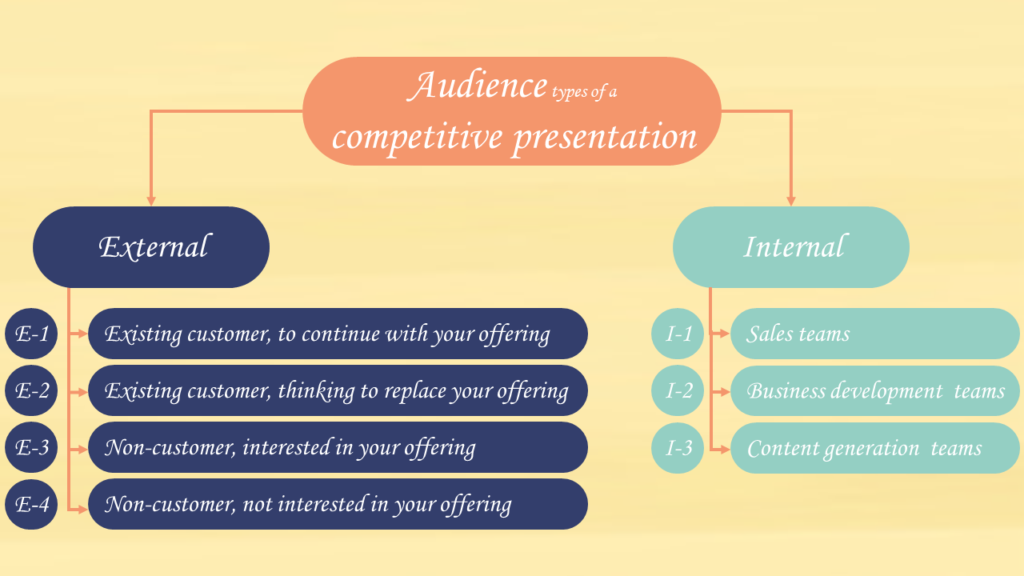Delivery of a competitive presentation differs significantly based on the audience. It’s all about the audience – is the most frequent advice for giving a presentation. Before my first competitive presentation several years ago, I was given the same advice without decoding what it really means. Years passed while I delivered hundreds of competitive presentations. Here is how I decode this 1-liner now in case of a competitive presentation. Overall, the audience can be internal or external. External audience can further belong to sub-types as explained below.

Internal audience
Internal audiences belong to your own organization. They are involved in direct or indirect sales. They may be in a sales role, responsible for actively selling to the end customers, or doing business development or generating content. The audience in the business development and content generation roles would be able to perform their jobs more effectively by knowing the key differentiation. But the ultimate goal of delivering a competitive pitch to internal audience is to train the sales teams. People in the sales fight competitive battles every day. They should be trained to deliver a competitive presentation to an external audience. Essentially, you want to hand-off enough ammunition so that they can convince non-customers to buy your offering. In existing accounts, they should be able to defend your offering if and when your competition tries to make in-roads.
External audience
These are the end customers and can belong to the following sub-types:
- E-1: Your existing customer and plan to continue with your offering.
- E-2: Your existing customer and thinking to replace your offering by a competitor(s)
- E-3: Not your existing customer but interested in your offering.
- E-3: Not your existing customer and not interested in your offering.
It shouldn’t take you long to realize that the actual delivery can differ based on the above sub-types. Imagine you are at your customer’s site in a room full of people from the customer’s organization. The overall mood of the room can be very different if that customer falls in E-1 sub-type versus the customer falls in E-2 sub-type. In the case of E-1, the overall environment is friendly. But in case of E-2, it is almost certain that the customer has already been briefed by your competitor. This can lead to an overall defensive environment. The sub-type E-4 is altogether a separate level.
In future, I will write more on this topic and tips to be more effective in delivering a competitive presentation based on the audience type and sub-types. For now, hopefully this high level decode of – It’s all about the audience – has given you some food for thought.
